Little Egret Egretta garzetta
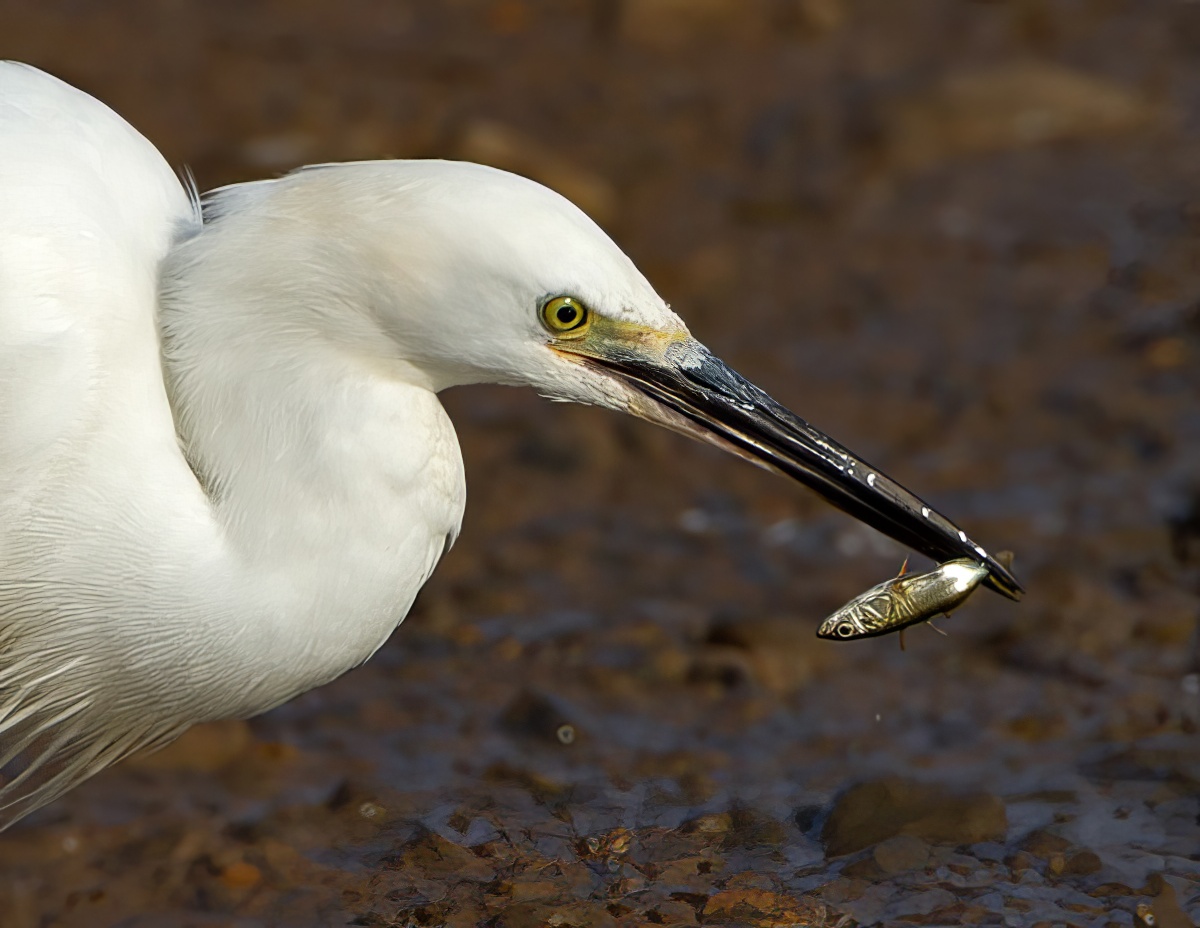
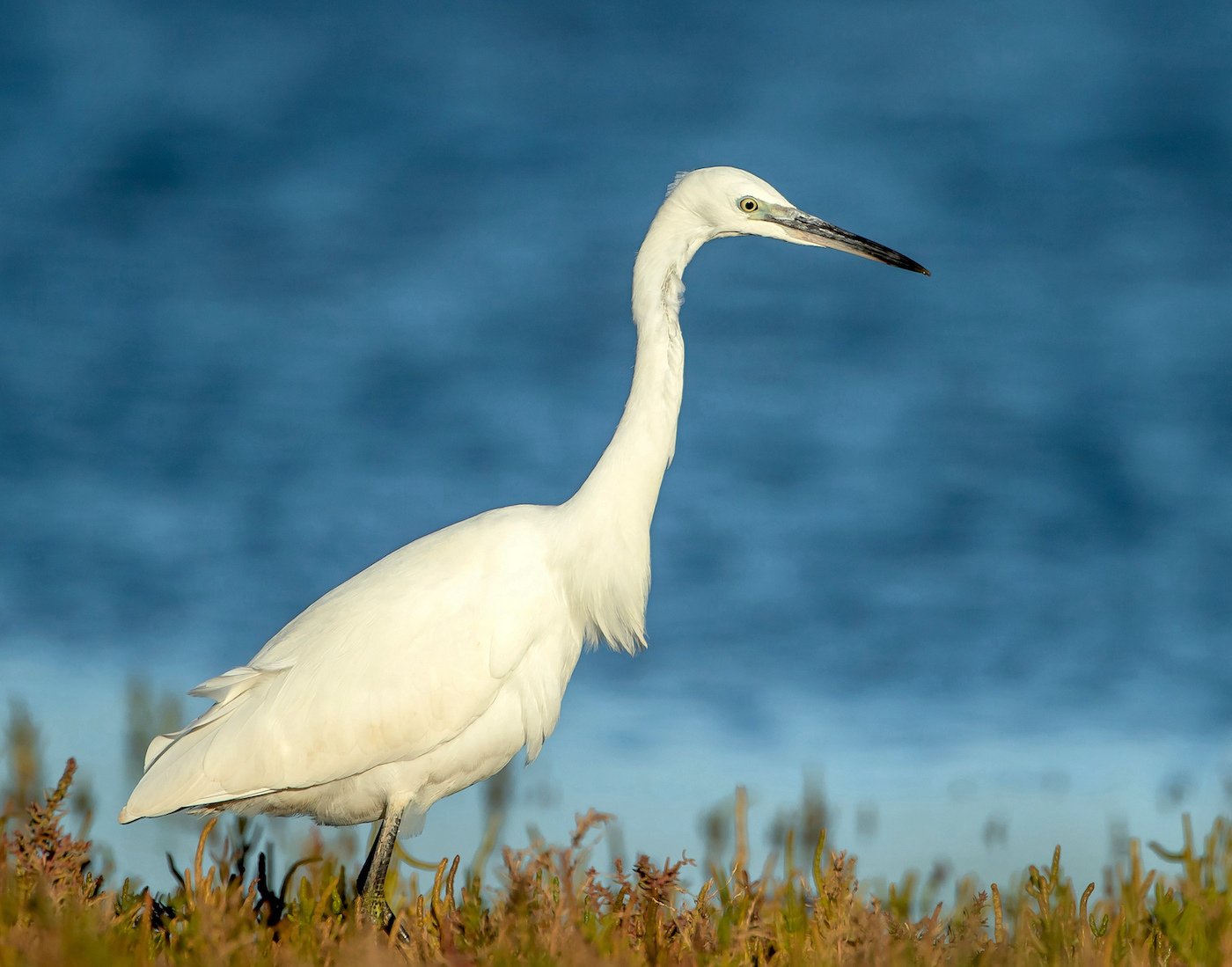
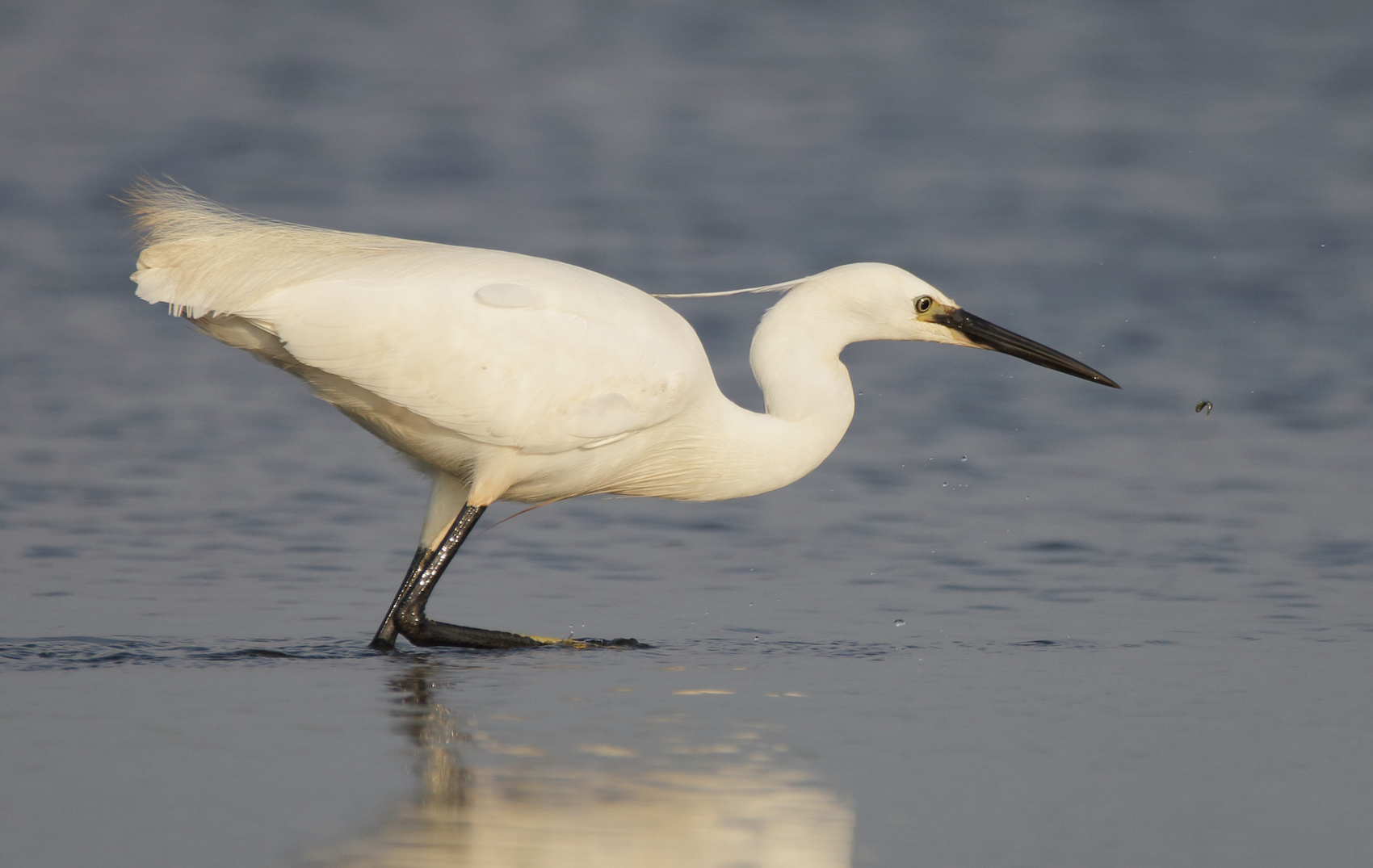
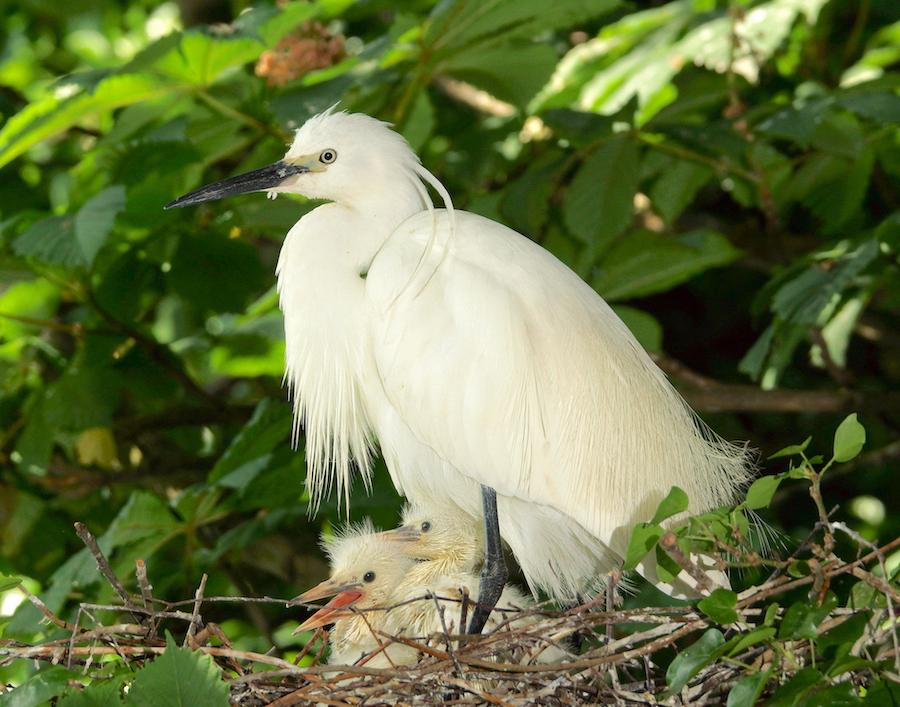
In the first treatise on the birds of Lincolnshire written by Smith and Cornwallis (1955), the species is not even mentioned. Lorand andAtkin (1989) summarised the species status as “a rare vagrant recorded with certainty only during recent years”. The first acceptable record for the county was of a bird at Frampton marshes on July 23rd 1966, somehow a very suitable occurrence given the prominence that site now has within the county. Spring influxes of this species and other southern herons to the UK occurred in 1970 and 1973, resulting in six county records. Lorand and Atkin finish by stating that there have been at least five more records since, with one bird over-wintering on the Wash in 1987/88. The likely origin of these birds was hinted at when a Dutch-ringed bird was found dead at the River Welland mouth in September 1979, having been ringed as a nestling two months earlier. Since then the spread of Little Egret into and across the county has been nothing short of phenomenal from a rarity (It was on the BBRC list until 1991) to a fairly common, but fairly local breeding bird in 25 years.
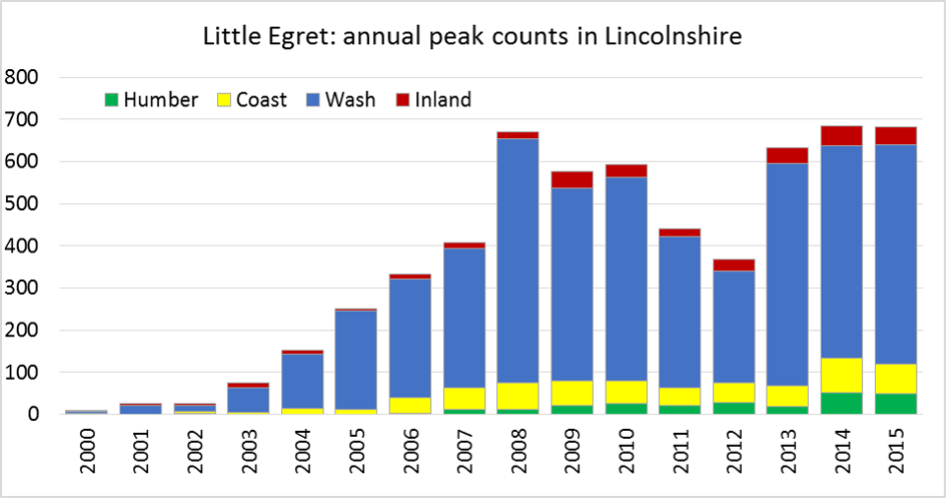
Annual peak counts (= sum of the monthly peak counts for each area in each year) for Little Egret Egretta garzetta 2000-2015 .
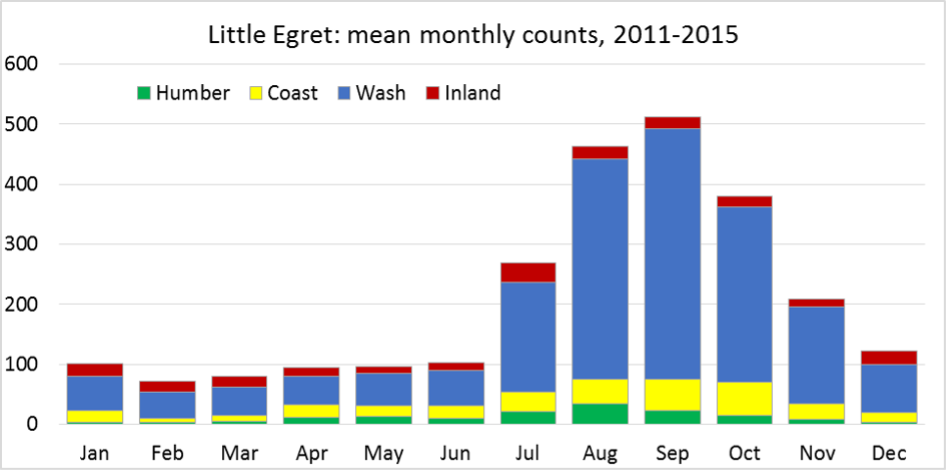
Monthly peak counts for each area averaged for 2011-2015 for Little Egret Egretta garzetta, 2000-2015.
RBBP records show an average of 104 pairs per year bred during the period 2013-2017 and these had increased to 118 pairs in 2019, breeding in 9 widely dispersed locations both inland and coastal throughout the county. Though primarily a bird of the coast, wintering birds are even more widely dispersed inland and can turn up at unlikely spots in the middle of the Wolds. Birds colour ringed as nestlings at one egretry in the north-east of the county have been seen in the Channel Islands, Somerset, Surrey, Shropshire, Cheshire, Northumberland, Tyne and Wear and Scotland. Peak numbers are usually noted on the Humber and The Wash in August-September as fledglings start to move. The Wash has been by far the most important site during this period, with the northerly coastal sites and the Humber becoming significant from 2006 onwards. Inland sites also start to figure from that year. As would be expected as newly fledged youngsters are added to the population, maximum numbers occur in the autumn starting in July and peaking in September. The highest numbers are seen on The Wash and on the coast and on the other estuary, the Humber. The totals will both reflect post-breeding increases locally bred and immigration from elsewhere - birds from Norfolk and Nottinghamshire have been observed in Lincolnshire. Post-juvenile dispersal in many species is a well-known phenomenon and birds ringed as nestlings (pulli) in Lincolnshire have been sighted as far afield as Aberdeenshire, Somerset, the Channel Islands and north-central France in the autumn months (see section (c) below).
Numbers peaked in 2008 but subsequently suffered reversals due to several prolonged spells of freezing weather, not conducive to the survival of fish-eating birds, notably in 2010/11. There was a rapid recovery by 2013 but it remains to be seen whether the county total will continue to increase.
Finder’s report: Little Egret at Donna Nook, May 5th, 1970.
by S. Lorand
Note: this account is taken from the original Rarities Committee submission and the first account that we have coming after the first confirmed record in July 1966. The RC noted in the report for 1970 that there was an unprecedented spring influx that year. The total may have been as many as 40. The first twelve (approximately) were found during 17th-19th April, including one which reached Wigtownshire. All but three of the May-June records were from south and east Ireland and south and east England; some of the English ones may well have been the April birds wandering gradually east. There were no records in autumn, which was surprising given that all of the 10 records in 1969 were in the autumn.
Circumstances
At 10.45 hr. whilst walking down an area of saltmarsh I saw two Little Egrets standing about 200 yd. in front of me, by a small pool. After a short examination through binoculars, I summoned G. K. Brown who was nearby. Unfortunately, the birds were between us and the sun and in the process of moving to a better position behind a ridge of sand dunes the birds twice rose to a height of about 50 ft., circled and landed again. From 11.00 to 11.20 hr., we were able to watch the birds with the sun behind us and at a range of about 75 yd. Both birds were fairly inactive, preening occasionally but for most of the time standing facing away from us.
Wind was SE 4, visibility moderately good, 0-2/8 cloud, bright and sunny.
Description
Size – a Carrion Crow half-heartedly stooped at them, thus emphasising their small size – bodily smaller than the Crow. One bird was a fraction larger than the other and had a more slender, and slightly longer bill than its companion. Heads were hunched into the shoulders throughout the period of observation and a slight jowled effect was apparent, though not nearly as marked as in Cattle Egret
Head, upperparts, underparts – their plumage was wholly pure white, with two long head plumes, roughly equivalent to the bill length. The plumes were frequently raised by the wind so that they stood up and drooped forward at the tips. The wind also increased the prominence of the scapulars. The tail was hidden by the wings at rest.
Bare parts – legs were black, but the feet were hidden in the long grass. The bill was slender and black and slightly yellowish at the base.
Flight – at 11.35 and again at 11.40 hr. both birds rose into the air and landed about half a mile away; at 11.45 hr. they rose again and gradually gained height and left to the north. They were seen again at 12.00hr. as they flew back south. Their flight was horizontal with head hunched into shoulders and legs projecting well beyond the tail. This was the only occasion we could pick out the paler feet (though not clearly seen to be yellow). Wings were broad and well-rounded, and they flew with leisurely wing beats, though were making little headway into a force 4 wind. They eventually turned SW, then north and were eventually lost to sight.
References
Smith, A. E. and Cornwallis, R. K. (1955). The Birds of Lincolnshire. Lincolnshire Natural History Brochure No. 2, published by the Lincolnshire Naturalists’ Union.
Hyde, P. A. (2015). The status of Little Egret Egretta garzetta in Lincolnshire. Lincolnshire Bird Report 2015. 191-196.
(Account as per new Birds of Lincolnshire (2021), included September 2022)
